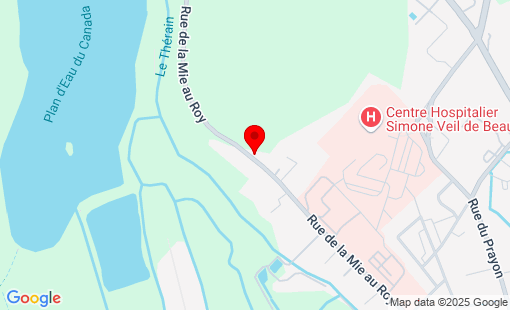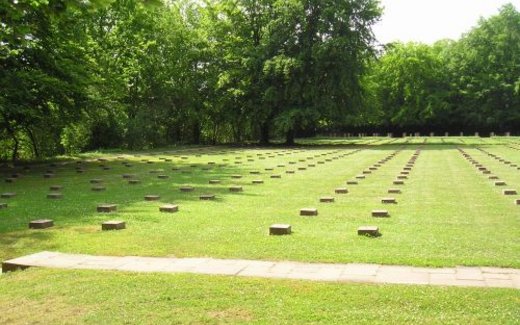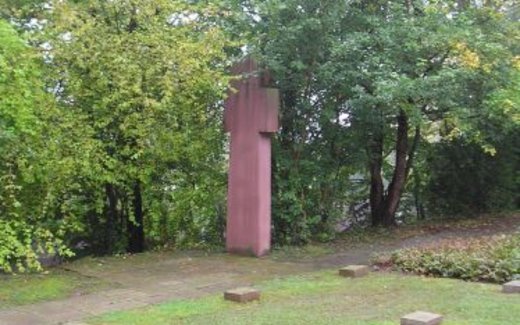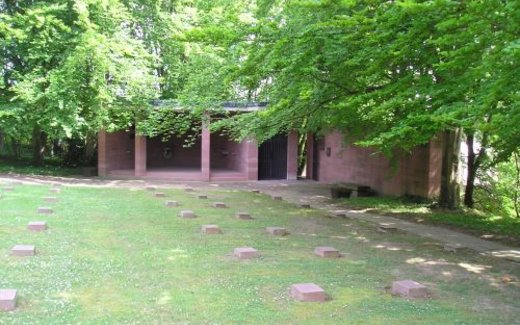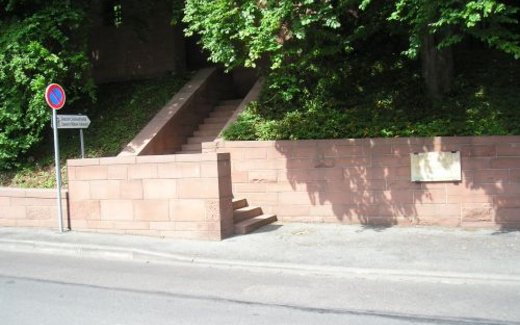The German war cemetery in Beauvais is the resting place of the dead of the Second World War.
Description of the cemetery
The cemetery is located on the southern edge of the "Bois Brûlet", a forest north of the city center. A stone staircase leads to the narrow gate of the entrance building made of reddish Main sandstone. The roof is covered with copper sheeting. Inside, large letters on the wall read: "Remember the dead! - Transform yourselves!"
The forest borders two sides of the cemetery. To the south-east and at the entrance, a sandstone wall separates the site from the surrounding area. The edges of the cemetery are planted with bushes and groups of trees. The majority of the graves are marked by pillar stones with the names and dates of life of two war dead each. Towards the forest side, 80-centimeter-high steles with four names each have been erected.
A three and a half meter high stone cross rises in the rear third of the elongated site.
Occupancy
The Second World War claimed around 240,000 German and around 255,000 French victims in France. The Wehrmacht burial service laid out the war cemetery in the summer of 1942. War dead from the French campaign were reburied here from the Oise, Somme and lower Seine regions. Further burials were carried out by the French burial service in 1946 and 1947.
History
Two war cemetery agreements (1954 and 1966) between Germany and France form the legal framework for the expansion and preservation of German war cemeteries. The 1954 agreement enabled the Volksbund Deutsche Kriegsgräberfürsorge e. V. to expand the Beauvais site from July 1961. It was opened to the public on July 4, 1964.
By 1975, the War Graves Commission had completed 22 cemeteries for soldiers of the Second World War in France. The Giffertswald site (Spicherer Heights) was added in 1998. For decades, young people have been helping to maintain and care for the war cemeteries in France in German and international work camps. From the mid-1950s, they were also involved in the construction of new cemeteries.
Special feature
Around 60 kilometers east of Beauvais lies the town of Compiègne. On November 8, 1918, French Marshal Foch received a German delegation in a railroad carriage, his saloon car, in a clearing in the forest. The delegation signed the armistice agreement here on November 11, which sealed the German defeat in the First World War. Armistice negotiations took place in this carriage again on June 22, 1940 - under reverse auspices - which initially ended the so-called Western Campaign of the German Wehrmacht with a victory over France.
